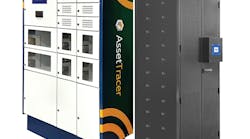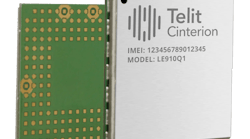Tyco's Sensormatic Electronics Corporation has acquired Vue Technology, a firm which offers item-level RFID software and hardware. The company's products and software are a fit into Sensormatic's offerings for retail loss prevention.
The Vue Technology family of products includes a software platform for RFID monitoring and tracking, and also includes RFID readpoints and networking devices. The technology is designed to work together for real-time inventory tracking, and will be integrated into the Sensormatic offerings according to a statement released today by Sensormatic.
“For the past six years, Vue Technology has focused on delivering to retailers the most scalable, reliable and ROI-driven RFID solutions on the market,†said Vue Technology CEO Robert Locke. “We believe this acquisition will help to accelerate the adoption of item-level RFID technology to offer retailers greater visibility throughout the retail environment, helping them drive increased profitability and revenues. Vue gains access to Sensormatic’s product development resources and Tyco’s global delivery capabilities. Additionally, Vue will benefit from the growing Sensormatic portfolio of smart sensor technologies.â€
Sensormatic's vice president and general manager Scott Clements said the acquisition also receives the benefit of Tyco company ADT Security Services, which is uniquely positioned to be able to sell and deliver these solutions around the world. Clements noted that there are already pilots in India, China and Europe -- areas where Vue's small sales force was not able to penetrate. Clements noted that ADT also brings a monitoring infrastructure along and would be able to remotely check the health and operability of these RFID systems.
RFID technology has been part of Sensormatic's technology offerings. The addition of Vue extends Sensormatic deeper into inventory controls and inventory accuracy reports. One of the signatures of Vue's item-level RFID technology is that it allows hundreds of antennas to be supported from a single RFID reader; many previous systems would strongly limit the number of antennas that could be used per reader.
Item-level RFID works like this: At the point of manufacturing, or during the distribution or even when being brought into a store, an RFID tag is attached the product. The tag is provisioned with the item-level information on the characteristics of the product (SKU code, color, size, manufactured date, product name, etc.). Then those RFID tags would be read antennas at any point, whether that's in the backroom storage, when it goes onto the floor, or by "smart shelves" with antennas built in, or by store employees doing inventory with wireless handheld devices. The item-level RFID system essentially tells retailers how many and which products are where.
That allows item-level tagging to be used to minimize out-of-stock issues, explains Locke.
"Knowing whether you have the right products on the shelf at any time is essential," said Locke. "Retailers may find that between 8 and 15 percent of their products are out of stock. Vue's customers have seen increases in sales simply because the products are there and in the right place."
According to Clements, the system can also be used as part of a loss prevention strategy.
Internal theft actually causes more loss than shoplifting," said Clements. "This technology gives us additional ability to manage things like sweethearting [a type of retail scam perpetrated by cashiers]. The dual technology tag [from Sensormatic] has both RFID and EAS and can be attached to apparel. We can now, at the point of sale when the clerk is to remove the tag, arrange it such that the detatcher won’t be able to remove the tag unless the point-of-sale system indicates there was a sale and that the product was rung up."
"Another example is in terms of managing fitting rooms," noted Clements. "Retailers can’t put cameras in fitting rooms, but they want to know what’s coming in and going out of a fitting room. RFID can identify very specifically what is coming in and going out of those fitting rooms."
Clements and Locke both noted that item-level RFID has applications both for real-time responses of stocking and loss prevention, but the data it collects can also be used to give retail managers insight into their business.
Vue has sold its technology primarily via the return on investment that a retailer can receive. Locke says that some customers have seen ROI within six months. Others, he note, have seen sales increases of up to 25 percent simply because they have the right product in the right place on the right shelf.
More information:
www.sensormatic.com
www.vuetechnology.com

